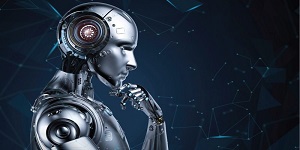
Webinar on AI & Robotics

Theme: Future trends in Artificial Intelligence & Robot Technologies
Meetings International is enchanted to welcome you to go to the "Webinar on AI & Robotics 2022'' one of its wonderful meetings, to be held during January 28, 2022. Dubai is underlining on late territories of more advanced research strategies in Mechatronics and Robotics.
AI & Robotics 2022 gathering will concentrate on the most recent and energizing developments in every aspect of Artificial Intelligence and Machine Learning research which offers a special open door for the members over the globe to meet, arrange, and see new logical advancements. Current state of knowledge, its impact on future will be discussed in detailed. Meetings International invites all experts to be part this webinar series and make it a perfect platform for knowledge sharing and networking.
It is also called mechatronics engineering, or a department of engineering that concentrates on the engineering of both electrical and mechanical operations, and also includes a mixture of robotics, electronics, computer, telecommunications, systems, control, and product engineering. As technology develops over time, several subfields of engineering have resulted in both adapting and multiplying. The purpose of mechatronics is to offer a design clarification that unites each of these various subfields. Basically, the department of mechatronics was nothing more than a mixture of mechanics and electronics, hence the name is a portmanteau of mechanics and electronics; however, as the complexity of technical systems continued to evolve, the definition had been widened to include more technical areas.
Artificial intelligence (AI), deep learning, machine learning and neural networks represent incredibly exciting and powerful machine learning-based techniques used to solve many real-world problems. For a primer on machine learning, you may want to read this five-part series that I wrote. While human-like deductive reasoning, inference, and decision-making by a computer is still a long time away, there have been remarkable gains in the application of AI techniques and associated algorithms.
Nano-robots are the robots that are simply known as that controllable machine at the nano (10-9) meter or molecular scale, composed of nano-components. More specifically, nano robotics refers to the still largely hypothetical nanotechnology engineering discipline of designing and building nano robots. Even though the field of nano robotics is fundamentally different from that of the macro robots due to the differences in scale and material, there are many similarities in design and control techniques that eventually could be projected and applied. Due to the modern scientific capabilities, it has become possible to attempt the creation of nano robotic devices and interface them with the macro world for control. There are countless such machines which exist in nature and there is an opportunity to build more of them by mimicking nature. Nowadays these nano robots play a vital role in the field of Bio Medicine. Especially in the treatment of cancer, Cerebral Aneurysm, kidney stones removal, also to remove the defected part in our DNA structure and some other treatments that has the greatest aid to save human lives. This paper guides to the recent research on nano robots in the Bio medical applications.
Robotic locomotion systems serve as a base platform for much of the field of robotics. Although the general public notion of a robot usually conjures images of either walking bipeds or wheeled mobile robots, the types of systems developed in robotics research extend far beyond these two classes of robots. Starting from a very general definition of gait, one finds that it is quite natural to define a wide variety of machines and devices as qualifying as robotic locomotion systems, including swimming robots, satellites with rotors, and modular metamorphic robots.
We present a concept of a ubiquitous industrial robot. It has been defined to consist of technologies of artificial intelligence, ubiquitous computing, sensor network and industrial robots. The advantages compared with current intelligent robots are that they are more autonomous and they have cognitive skills. A ubiquitous robot is interoperable with all sensors, computers and other devices around it. One important factor is the natural interaction with humans. The ubiquitous approach is more common in consumer applications but still new in the industrial environment, even if many research efforts are being made. We also present an example of a ubiquitous robot: the isle of automation.
Ant Robotics is a special case of swarm robotics. Swarm robotics are simple (and hopefully, therefore cheap) robots with limited sensing and computational capabilities. This makes it feasible to deploy teams of swarm robots and take advantage of the resulting fault tolerance and parallelism. Swarm robots cannot use conventional planning methods due to their limited sensing and computational capabilities. Thus, their behaviour is often driven by local interactions. Ant robots are swarm robots that can communicate via markings, similar to ants that lay and follow pheromone trails. Some ant robots use long-lasting trails (either regular trails of a chemical substance or smart trails of transceivers. Others use short-lasting trails including heat and alcohol. Others even use virtual trails.
With the development of cloud computing, big data, and other emerging technologies, the integration of cloud technology and multi-robot systems makes it possible to design multi-robot systems with improved energy efficiency, high real-time performance, and low cost. In order to address the potential of clouds in enhancing robotics for industrial systems, this paper describes the basic concepts and development process of cloud robotics and the overall architecture of these systems. Then, the major driving forces behind the development of cloud robotics are carefully analysed from the point of view of cloud computing, big data, open source resources, robot cooperative learning, and network connectivity. Subsequently, the key issues and challenges in the current cloud robotic systems are proposed, and some possible solutions are also given. Finally, the potential value of cloud robotic systems in different practical applications is discussed.
Robotics: New approaches in Automation
In order to build autonomous robots that can complete helpful work in unstructured conditions, new methodologies have been created for structure wise frameworks. The relationship to customary scholarly applies autonomy and conventional computerized reasoning is analysed. In the new methodologies, a tight coupling of detecting to activity produces structures for knowledge that are systems of straightforward computational components which are very wide, yet not extremely profound. Ongoing work inside this methodology has exhibited the utilization of portrayals, desires, plans, objectives, and adapting, yet without falling back on the conventional employments of focal, conceptually manipulable or emblematic portrayals. The discernment inside these frameworks is frequently a functioning procedure, and the elements of the communications with the world are critical. The subject of how to assess and contrast the new with conventional work still incites incredible discourse.
Robotic locomotion systems serve as a base platform for much of the field of robotics. Although the general public notion of a robot usually conjures images of either walking bipeds or wheeled mobile robots, the types of systems developed in robotics research extend far beyond these two classes of robots. Starting from a very general definition of gait, one finds that it is quite natural to define a wide variety of machines and devices as qualifying as robotic locomotion systems, including swimming robots, satellites with rotors, and modular metamorphic robots.
Human-oriented research on robotics is an active field. Researchers in the past tried to build robots that would mimic human beings and perform complicated tasks. Recently, they have shifted their main interest to human-symbiotic robotics in which human beings receive services from robots or are co-workers with robots in performing collaborative tasks. Hitachi began research on robotics at a very early stage and has been involved in many challenging projects since then. Its prototype intelligent robot in the 1970s and its Advanced Quadruped Robot in the 1980s are examples of Hitachi’s commitment to this field and the lessons learned from these projects are reflected in our latest EMIEW humanoid robots that act as evolving hubs between the human, machine, and information worlds.
Image processing is a method to perform some operations on an image, in order to get an enhanced image or to extract some useful information from it. It is a type of signal processing in which input is an image and output may be image or characteristics/features associated with that image. Nowadays, image processing is among rapidly growing technologies. It forms core research area within engineering and computer science disciplines too.
Image processing basically includes the following three steps:
- Importing the image via image acquisition tools;
- Analysing and manipulating the image;
- Output in which result can be altered image or report that is based on image analysis.
Robotics 2021
Internationa Webinar on Robotics was organized on 30 June, 2021. The Webinar is organized virtually. The venue of the Webinar was Dubai, UAE. There were three speakers in the Webinar Dr. Farah Jemilli (Tunisia), Dr. Pietro Garofalo (Italy) , and Dr. Varun (India) on interesting titles which included Artificial Intelligence and big data analysis for cyber security, A novel framework for motion in AI consumer products by means of wearable devices, and Artificil Intelligence respectively. The delegates were from various universities joined through linked shared on social media. The platform was open for students, professors, researchers, and post graduate students to present their research infront of deleates and other speaker.
The scientific sessions of the webinar are as follows: AI in cyber security, AI in consumer products, and AI applications.
Internationa Webinar on Robotics was organized on 30 August, 2021. The Webinar is organized virtually. The venue of the Webinar was Dubai, UAE. There were three speakers in the Webinar Dr. Farah Jemilli (Tunisia), Athira M (Germany) were gave presentation of Driverless car and role of AI in Data Security. The delegates were from various universities joined through linked shared on social media. The platform was open for students, professors, researchers, and post graduate students to present their research infront of deleates and other speaker.
The scientific sessions of the webinar are as follows: AI in cyber security, AI in consumer products, and AI applications.
- Mechatronics
- Artificial Intelligence (AI)
- Nano Robots
- AI Medicine
- Robotics Locomotion
4 Renowned Speakers
Bojana Turic
Wuhan Landing Intelligence Medical Co., Ltd Wuhan, China
China
Thyword C. Nnadi
LL.B, Abia State University, Nigeria, B.L (Nigerian Law School)
Nigeria
Jemili Farah
University of Sousse, TUNISIA
Tunisia





















































































































